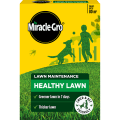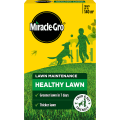Dig a hole and just put in the plant roots? To ensure plants establish quickly, grow properly and live a long time, you need to take a little more time and effort than that when planting up your beds and borders.
Most plants that you buy from your gardening retailer are grown in high organic potting compost, not soil. To match these conditions, your planting hole needs to be enriched with more organic matter to encourage the roots to spread out into the soil. This ensures plants get off to the best possible start, establish quickly and so grow and perform beautifully.
Autumn is the best time for planting all permanent hardy plants, especially those that are bare-rooted and are not sold to you growing in a pot. Plants can still be planted in winter, as long as the ground isn’t waterlogged or frozen solid.
Pot grown plants can be planted any time of year, but autumn and spring give best results. If planting in summer, during hot and dry weather, extra care is needed – especially watering in after planting and watering during dry conditions.
Planting a pot grown plant
- Water the plant thoroughly before you start. The rootball must be thoroughly wet before you start.
- Dig a hole that is at least 10cm (4in) wider and deeper than the pot the plant is growing in. Dig or fork over the bottom of the hole to loosen the soil.
- Enrich the soil you have dug out with equal quantities of well-rotted garden compost, planting compost or soil conditioner. This is your planting mixture. A handful of continuous release plant food added at this stage will provide a steady source of plant nutrients that will feed your plant for the first season of growth.
- Place a 5cm (2in) layer of the planting mixture in the bottom of the planting hole.
- Remove the plant carefully from its pot and if possible gently tease some of the roots away from the edges, so they will naturally spread into the planting mixture.
- Place the rootball in the planting hole, so that the plant is at the same depth as it was originally growing, and gradually fill in space around the rootball with more planting mixture, pressing down gently as you go.
- Tread down gently around the plant to ensure firm planting.
- Water in well.
- Mulch the soil to preserve soil moisture and keep down weeds.
Planting a bare root plant
- Follow the principles above, but make your planting hole wider and shallower so that the roots will fit in easily.
- Dunk the plant roots in water for at least an hour before planting.
- Position the plant in the hole, so that the soil level will be the same height on the stem as when it was growing in the nursery.
- Gradually work the planting mixture between the roots, pushing the material down with your fists to fill in firmly between the roots.
- Fill the planting hole and tread the material down with your heel. Lightly loosen the surface, water well and add a mulch.
Planting bedding plants or vegetable seedlings
- Dig the whole area incorporating well-rotted garden compost, planting compost or soil conditioner or improver into the top 15cm (6in) of soil.
- Dress the soil with a controlled release plant food.
- Dig individual planting holes and fill with a planting mixture made up of soil mixed with equal quantities of well-rotted garden compost or other organic matter or planting mix.
- Leave a slight indentation around the plant so that extra water remains in the basin and goes down to the plant roots.
Planting acid loving plants
- Check the acid/alkaline balance of your soil with a simple pH Test Kit. If the results show your soil is naturally acid or neutral go ahead and plant rhododendrons, azaleas, camellia and the like as detailed above in Planting a pot grown plant. In neutral soils, they will benefit from planting with ericaceous compost and feeding with plant food for acid-loving plants.
- If the soil test shows your soil is alkaline then plant in a pot of ericaceous compost and feed with an ericaceous plant food throughout the summer.








